Does Core Shape Matter?
Date Posted:
August 12, 2012
Category:
Bowling Technical Information
People often ask about the importance of core shape on as-drilled behavior,
given that all other things are equal. In other words, given two bowling
balls with equal RGs and differentials but with different core geometry, how
much different can they be after drilling due to the cores being shaped
differently? This post explores this subject and provides some useful
insights into this important topic.
Sometimes, core shape is not very important. Other times, however, it can
be extremely important. We'll look at an example of each case below.
For both cases, we'll compare the same two bowling balls: the Columbia 300
Oath and the Ebonite Game Breaker. Both of these balls are low RG
symmetricals with medium / high total differentials. Their undrilled mass
properties aren't exactly the same, but they are certainly close enough for
this demonstration:
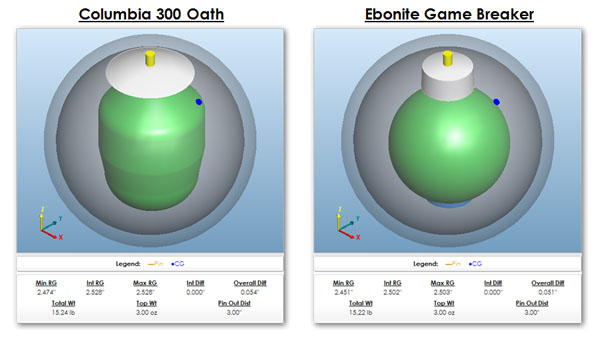
Before drilling, the Columbia 300
Oath and Ebonite Game Breaker have very similar mass properties, but different
core shapes.
First, we'll drill these two bowling balls with the same layout: a high-flaring
pin-up layout with 60 degree drilling angle, 5.25 inch pin-to-PAP distance, and
30 degree VAL angle. Shown below is the Columbia 300 Oath, along with its
predicted on-lane track flare:
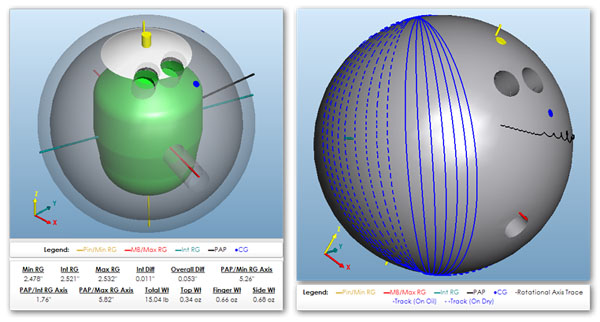
Columbia 300 Oath with 60 deg. x 5.25" x 30 deg. layout
And now, here is the same layout in the Ebonite Game Breaker:
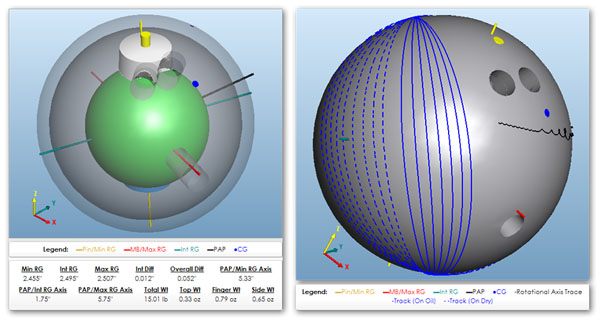
Ebonite Game Breaker with 60 deg. x 5.25" x 30 deg. layout
With this pin-up layout, we can see that both balls flare almost identically. Therefore, in this case, the
actual geometry of the ball's core components does not have a significant impact
on the resulting on-lane behavior.
We'll now repeat the above test with a different layout. Here, we'll use a
much lower-flaring layout, using the same drilling angle and pin distance as
before, but with a 50 degree VAL angle and with deeper finger holes to reduce
the overall differential. Below is the Columbia 300 Oath with this layout:
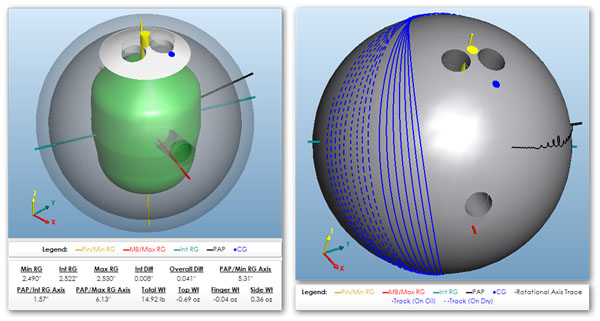
Columbia 300 Oath with 60 deg. x 5.25" x 50 deg. layout
And, again, here is the same layout in the Ebonite Game Breaker:
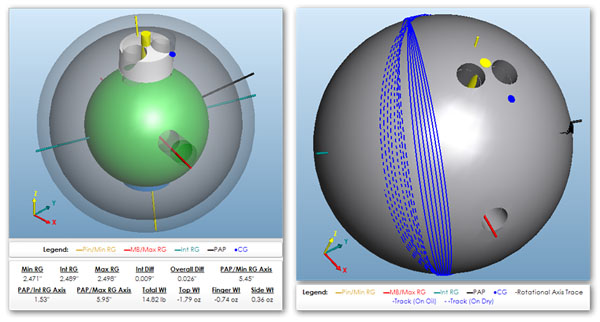
Ebonite Game Breaker with 60 deg. x 5.25" x 50 deg. layout
This time, when we compare the two bowling balls, we see that the core components' geometry
plays a huge role, as the Oath still flares significantly, while the Game
Breaker now flares very little!
So, does core shape matter? It depends: sometimes it matters a lot,
but other times it matters very little. If you drill bowling balls with
Powerhouse Blueprint, then you can take advantage of its virtual CAD-based ball
drilling functionality to make sure your layouts produce the desired on-lane
results. If you still drill bowling balls the old-fashioned way, however,
all you can do is make your best guess and hope for the best!